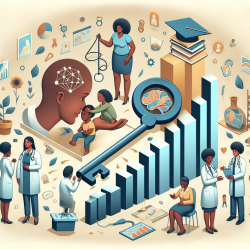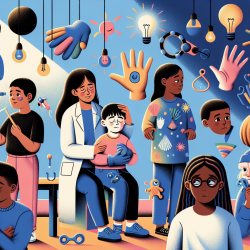Introduction
In the realm of speech-language pathology, the integration of technology and data-driven methodologies is paramount for advancing therapeutic outcomes. The research article "From word models to executable models of signaling networks using automated assembly" by Gyori et al. (2017) introduces a novel approach that leverages natural language processing (NLP) to convert verbal descriptions into computational models. This methodology holds significant potential for enhancing the practice of speech-language pathology, particularly in the context of online therapy services like those provided by TinyEYE.
Understanding the Research
The study by Gyori et al. presents the Integrated Network and Dynamical Reasoning Assembler (INDRA), a tool that translates natural language into executable models. INDRA processes natural language descriptions of molecular mechanisms and converts them into intermediate representations, which are then assembled into computational models. This approach is not only efficient but also enhances model transparency, fostering collaboration across the biology community.
Implications for Speech-Language Pathology
While the study focuses on biological signaling networks, the principles of INDRA can be applied to speech-language pathology. By utilizing NLP and automated assembly, practitioners can create detailed models of language acquisition and speech disorders. This can lead to more personalized and effective therapy plans, tailored to the unique needs of each child.
Data-Driven Decision Making
Incorporating data-driven decision-making into speech-language pathology ensures that interventions are based on empirical evidence. By employing computational models, practitioners can simulate various therapeutic scenarios and predict outcomes, thus optimizing therapy strategies. This aligns with TinyEYE's commitment to providing evidence-based online therapy services to schools.
Encouraging Further Research
The innovative use of NLP and automated assembly in creating computational models encourages speech-language pathologists to engage in further research. Exploring the intersection of technology and therapy can lead to groundbreaking advancements in the field. Practitioners are encouraged to delve deeper into how these methodologies can be adapted to speech-language pathology, potentially leading to new insights and improved therapeutic techniques.
Conclusion
The integration of natural language processing and automated assembly into speech-language pathology represents a significant step forward in enhancing therapeutic outcomes. By adopting data-driven approaches, practitioners can provide more effective and personalized therapy. For those interested in exploring this further, the original research paper can be accessed here.










